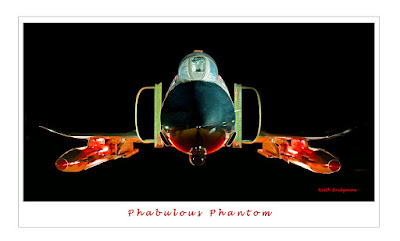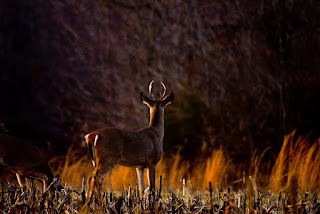The Oregon coast is perhaps one of the most iconic if not scenic of coastal areas. Mostly unspoiled, long stretches of pristine beaches run almost the full length of the western edge of the state. During the few years I spent out there as a member of the U.S. Coast Guard Station Umpqua River, Winchester Bay (mid-1970's), I often strayed away from the routine of station life to walk amongst the miles of driftwood timbers cluttering the high tide mark. Those outings were attempts to satisfy another one of my many Walter Mitty dreams that never came to pass; being an adventurous archeologist, and this was way before the days of Indiana Jones.

Pacific storms often batter the Oregon coast and because of their ferocity they will reshape and gouge the beach to expose relecks from times past. Those storms over the decades tossed many ships and sailors toward a dooming encounter, to run aground, on the deceptively beautiful beaches. Close to 3000 shipwrecks dating back to 1600's are scattered along this coast. (One of the oldest was a Spanish Galleon in the late 1600's that was lost enroute to Mexico from the Philippines. No one for many years knew for sure where it was lost, but recent discoveries places it along the Oregon coast. The first documented shipwreck occurred in 1808 when the Sea Otter, a 100 ton fur trading vessel was caught in a storm and wrecked near Reedsport/Winchester Bay.) During my tenure there, as luck would have it, after one such storm, the wreck of an old wooden sailing schooner was resurrected out of its sandy grave and exposed once again to the elements. I was determined to explore it.
 |
Internet Photo for Illustration
(courtesy Photos of the Past)
Alpha Sailing Schooner |
Too many years have passed for me to remember the name of that schooner wreck. (
It might have been the Alpha - a wooden sailing schooner run aground near the Umpqua River Bar/Winchester Bay/Reedsport area on February 3, 1907, but to be honest, I'm not sure if it was north or south of the Umpqua River Bar. Overtures to some of the historical societies in the area have proven unsuccessful in identifying the one I visited.) Regardless, I began my journey hiking down the beach one blustery day to check it out.
Back then, just south of the Umpqua River Bar, there were three parking areas, each a mile or so apart. The remains of the wreck was located a few miles further south of the last parking area and required either a hike in or a 4x4 to get there. I did not have a 4x4 then, so I set off on foot.
A dark, low hanging overcast covered the landscape, so low and foreboding it all but seemed to blend with an ocean turned heavy by a stiff Northwesterly wind. Mist from the overcast mingled with the air and joined the wind whipped moisture coming off the breakers that were rolling in just off shore. One after another the breakers tumbled in generating a constant roar as they collided with the end of the continent.
Behind and above the beach along the Douglas Fir lined ridge, the low overcast embraced the irregular tops of the trees turning them into ghostly gray apparitions. A beautiful sight in its own right, but not exactly the best kind of day for a hike, but the kind of day where the feel and fragrance and exhilaration of the moment burns itself into a forever visual memory.
It is always chilly on the beaches of Oregon, even in summer, but I purposely underdressed because the long hike ahead of me required some effort. All I wore that day was a long sleeve cotton blue work shirt, my C.G. issued heavy field jacket, dungarees, a ball cap, and a pair of boots. The only tools I carried included my venerable Buck 110 folding knife. That knife was rather new at the time, maybe a year old and it was sharp. It had to be, and we were constantly sharpening them for we used our knives for all kinds of things from scraping paint, to whittling, to cutting heavy line, all activities that tended to dull a blade. I figured I might find some old brass or iron spikes embedded in the timbers I could dig out.
At the time, I wasn't sure how far it was to the wreck. I wasn't even sure for what it was I was looking. I figured I'd just walk until I found it. Felt like it was a lot further than what folks said it was as my hike dragged on for what seemed like miles, and walking that far on sand is not easy. About half way down, I crossed where a small creek emptied into the ocean as it spread out into a meandering delta-like stream several tens of yards across, and in places it was several inches deep. I tried to cross, jumping here and there, tip-toeing without getting my feet wet to no avail...they got wet. Being in a constant state of chilled wetness was just part of life as a member of a C.G. Lifeboat station...and I was used to it by then.

Just above the high tide, storm surge mark, the force of the storm had carved the sand into a seven or eight foot high crumbling sand wall topped by clumps of beach grass and loose debris that ran for miles. I had timed my hike to coincide with a receding tide. Spread across the sand in front of that wall were piles upon piles of large timbers of driftwood bleached almost white from exposure. I almost turned back after a good ways because I could not find anything that looked like the wooden spars of an old sailing schooner. However, a bit further out across the beach a line of tire tracks extended the length of the beach. I figured they were from a 4x4 heading out to the wreck site...and that assumption proved correct for a short distance later I spied what appeared to be a 4x4 Blazer parked near the sandy wall.
 |
Internet Photo (Emily Reed wreck) Similar
to the Schooner wreck debris
|
A short while later I lumbered onto the wreck site. It was a remarkable, but sad site. Large ship timbers extended out from the sandy wall with ribs radiating in disarray laying on the sand to either side. There was no form or shape to them, just timbers that vaguely resembled the shape of a sailing vessel. Unfortunately, there had been so much damage done to the wreck site by souvenir hunters wielding chainsaws, it was voided as a potential archeological site. There was not much left of it, just scattered timbers here and there with a few still attached to the main spar extending out from the sand wall. A lot of the debris had been stacked into a pile of rubble. The people who drove the Blazer were friendly enough, but seemed a bit uneasy about me being there. They replaced/hid their chainsaws inside the Blazer and simply kicked the sand around looking for artifacts. More than likely they saw the stenciled C.G. Station Umpqua River across the back of my field jacket and thought I might be investigating the situation or something. Actually I was, but not in the context of what they might have thought.

Regardless, they left a few moments after I arrived and I had the place to myself. I searched the loose timbers and found one S-shaped and partially broken brass spike that had been used to hold two pieces together. After that, I found a rusted out iron spike and some broken glass. The sight had been pretty well worked over so not much was left. Eventually, I moved closer to the sand wall from where the timbers extended out, and saw what looked like the bottom of an old bottle sticking out of it.

I brushed away the loose sand. To my dismay, an old wide mouth medicine bottle with a cork stopper still in place, rolled to the bottom of the wall. It looked like some kind of substance had dried and stuck to the inside surface. The cork was still intact, but quite fragile. I stuck the bottle inside my coat pocket. A short time later using my hands to scrape the sandy wall another bottle appeared. This time it was an old Listerine bottle, again with a cork stopper still attached. I could tell it was old because of the kind of top it had, the embossed lettering, the coloration, and the fact that air bubbles were scattered throughout the glass. There was still some kind of liquid inside, just a small amount..water I thought, and I carefully removed the cork and took a sniff. To my astonishment, it smelled like...Listerine. Go figure. My guess, both bottles were from the sickbay/medical supplies on board the schooner. (In spite of my best efforts, although I still have that first medicine bottle, I was unable to find it for a photo to be included.)
I found no other artifacts of consequence during my stay, just some loose odds and ends, broken glass, and some small pieces of wood. The evening was fast approaching and I had a long walk back, so I said farewell to this symbol of a lost era. I wish now I would have returned and spent more time there searching that sandy wall for more amazing things to discover. I still have those few pieces of history I did find, and will from time to time hold them in my hand as I recall the events of that day. The old Listerine bottle helps to date the wreck from somewhere around 1905 - 1910 which corresponds with the date (Feb 3, 1907) the Alpha ran aground. The corks that were still in the bottles, after being exposed to the drying properties of the air, rapidly deteriorated and crumbled away.
I suppose I have always had a fascination with history in general, and historical artifacts and the events surrounding them...I have a few other old pieces I've found over the years; old farm tools, harness fittings, things like that. I also cannot help wondering about the people involved with such places. It must have been a frightful experience to be onboard that schooner and tossed around by a storm to run aground. Not sure how many people lived or died during that dreadful encounter way back then. I can only speculate on what might have happened. All I know is those two bottles, brass and iron spikes, are part of a continuous timeline that began while the schooner was being built, to eventually end on that lonely stretch of beach.
A single day hiking for miles along the ancient beach inserted me into the historical timeline of a sailing schooner shipwreck, a timeline that continues even today when I hold those few articles in hand. Each time I am returned to that blustery day to revisit the sights and sounds of an amazing adventure. Having done so, well...it has to be one of my best Walter Mitty adventures and discoveries of all time.



















































